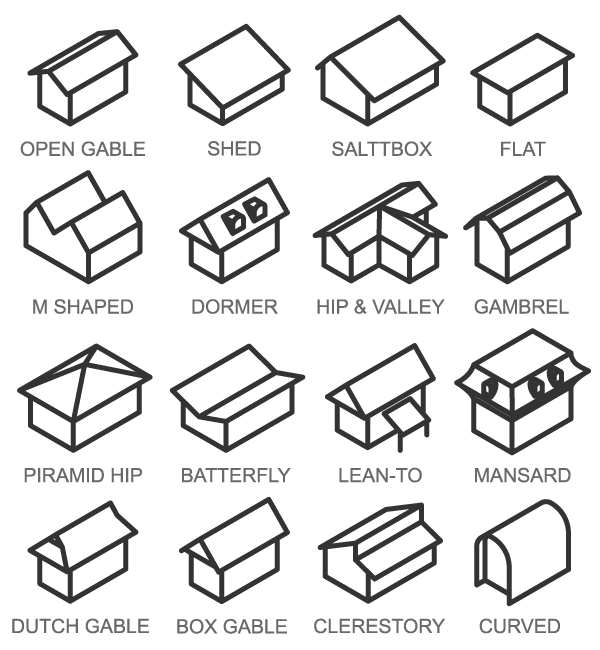Should I Buy a House With Gable Straps?
- Neglecting the condition of lateral restraints can lead to costly repairs down the line.
- Top Tip: To ensure your property meets safety standards, don't wait; get a surveyor or structural engineer to conduct a thorough inspection.
- Restraint straps help prevent roof uplift and can significantly reduce the risk of structural damage during severe weather conditions.
- Structural integrity is a fundamental aspect of property maintenance and can affect resale potential.
When considering the purchase of a home in the UK, especially an older property, one factor that often goes unnoticed is the condition of its restraint straps.
These small but significant structural components play an important role in the stability and safety of a house, particularly in regions prone to inclement weather.
What are gable straps?
Gable end restraint straps, also known as lateral restraint straps, are metal ties used to secure the triangular-shaped gable end of a roof to the walls of a building.
They are typically made of galvanised steel and installed in an overlapped or crisscross pattern to prevent the roof from being lifted or displaced during high winds or other stresses.
Essentially, restraint straps are built to enhance the structural integrity of a building by providing lateral support to the roof, ensuring it remains firmly anchored and fixed to the wall.
These straps can be fitted during the construction of a wall or added to an existing wall. Most modern buildings are constructed using lateral restraint straps, but alternatively, you can choose to install them on older walls that seem to be moving and need fixing.

Different types of gable roof designs
There are five main types of gable roofing:
- Box gable roofs have a triangular extension at each end of the house and boxed at the end of the roof section. The design resembles the standard gable roof, but the triangular section sets it apart.
- A front gable roof is placed at the front of the house, usually above the front door.
- A cross-gable roof consists of two or more gable rooflines which intersect at an angle, usually with two ridges placed perpendicular to one another. Homes with a cross-gable roof might have separate wings, a large porch, or an attached garage.
- A gable roof with shed roof addition is a typical alteration to an existing gable roof. The hybrid design is popular for property owners who want to extend their headroom and space without altering the roof's structure too much.
- A Dutch gable roof is a hybrid of a gable and hip roof. It’s used to increase loft space and headroom inside the house.

What is a hip roof?
A common, popular type of roof without any flat sides. Four slants meet to form a crest in the middle of the roof.
Hip roofs feature no gables and no vertical sections with a simple appearance. Hipped roof extensions are rising in numbers in the UK, so this type of roof is proving popular.
Flat roofs are vulnerable to water and debris build-up, which can then lead to structural damage if left untended.Why do lateral restraint straps matter?
In the UK, where gusty winds and storms are not uncommon, the integrity of the gable wall and a home's roof structure is crucial. Lateral restraint straps help prevent roof uplift and can significantly reduce the risk of structural damage during severe weather conditions.
They are especially important for older properties or those located in areas prone to strong winds. Without proper lateral restraint, a roof could be more susceptible to damage or collapse in extreme weather events.

Assessing the condition of restraint straps
When considering a property purchase, it's essential to have a thorough inspection conducted by a qualified surveyor or structural engineer.
They will assess the condition of the gable wall and lateral restraint straps, along with other structural elements of the house. Signs of concern include rust, corrosion, or inadequate installation of separating walls.
If issues are identified, repairs or reinforcements may be necessary to ensure the property meets safety standards.
During the assessment, a surveyor inspects gable walls and straps looking at the following:
- Visual Inspection: The surveyor will visually examine the straps for signs of wear, rust, or corrosion. Rusty or corroded straps can compromise their strength and effectiveness in securing the roof structure.
- Installation Quality: Proper installation involves anchoring the straps to the roof framing and the wall studs so they are fixed securely. Any signs of improper installation, such as loose or misaligned straps, could signal potential structural issues.
- Material Integrity: The surveyor will check for any signs of deterioration in the steel material which may need fixing, such as pitting or weakening due to rust. If the straps are significantly degraded, they may need to be replaced.
- Code Compliance: The surveyor will verify whether the straps meet current building code requirements. Older properties may have a lateral restraint that does not meet modern standards and may require fixing.
- Load-Bearing Capacity: The surveyor will assess whether the straps can withstand anticipated loads, including wind forces common in the property's location. Upgrading to a higher load-bearing capacity may be necessary in areas prone to severe weather conditions.
- Overall Structural Integration: Restraint straps work alongside other roof and building structural elements. The surveyor will evaluate how well they integrate with the overall roofing system and structural design to ensure even load distribution.

Should gable straps impact your buying decision?
Some considerations that might impact your buying decision:
- Safety and Structural Integrity: Properly installed gable walls and straps are inherently safer and less susceptible to structural damage. Investing in a property with strong longitudinal bracing can provide peace of mind.
- Cost Considerations: Addressing any issues during the purchasing phase allows you to negotiate repairs or adjustments with the seller. This proactive approach can save you money and prevent future headaches associated with structural issues.
- Compliance with Building Regulations: Older properties may have restraint straps that do not meet current standards. Ensuring that they are up to code ensures safety and contributes to the property's overall value and longevity.
- Long-Term Investment: A property with compliant restraint straps is likely to retain its value better over time. Structural integrity is an essential aspect of property maintenance and can affect resale potential.
- Opportunity for Negotiation: Discovering issues during the inspection phase provides an opportunity to negotiate with the seller. You can request repairs or upgrades as part of the purchasing agreement, ensuring that the property meets your safety standards before you take ownership.
Jack is our resident Content Writer with a wealth of experience in Marketing, Content, and Film. If you need anything written or proof-read at a rapid speed and high quality, he's your guy.
Caragh is an excellent writer and copy editor of books, news articles and editorials. She has written extensively for SAM for a variety of conveyancing, survey, property law and mortgage-related articles.









